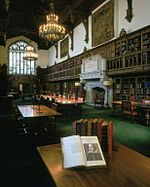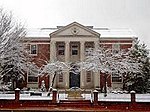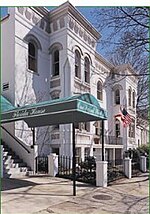Les Aspin Center for Government

The Les Aspin Center for Government, or simply the Les Aspin Center or "LAC" is an educational program and extension of Marquette University based in the Capitol Hill neighborhood of Washington, D.C., with a separate office at Marquette's home campus in Milwaukee, Wisconsin. The Center's mission is to offer students who are interested in public policy a chance to work and study in the United States capital or study abroad in developing countries like Kenya and Tanzania through its Africa program. The Les Aspin Center's permanent building in D.C. hosts students for semester or summer classes while they also complete internships in various government sectors. The Center is named for former Secretary of Defense and Marquette political science professor, Les Aspin, who died shortly before the permanent center was opened in 1995.
Excerpt from the Wikipedia article Les Aspin Center for Government (License: CC BY-SA 3.0, Authors, Images).Les Aspin Center for Government
East Capitol Street Southeast, Washington
Geographical coordinates (GPS) Address Nearby Places Show on map
Geographical coordinates (GPS)
| Latitude | Longitude |
|---|---|
| N 38.890159 ° | E -76.999196 ° |
Address
Les Aspin Center for Government
East Capitol Street Southeast
20540 Washington
District of Columbia, United States
Open on Google Maps









